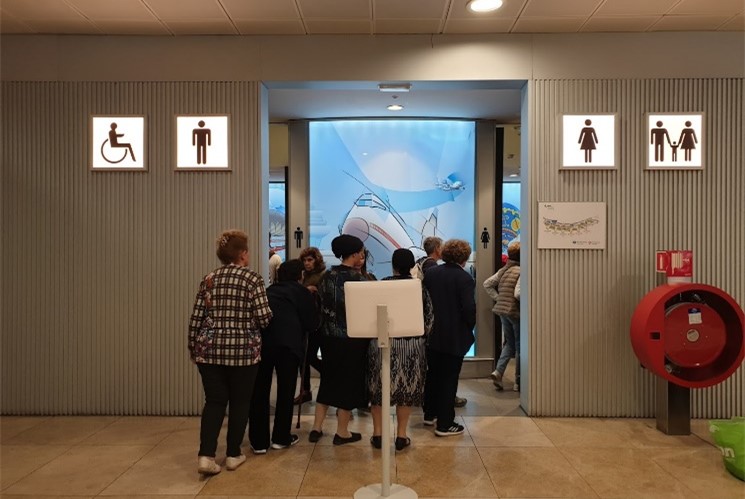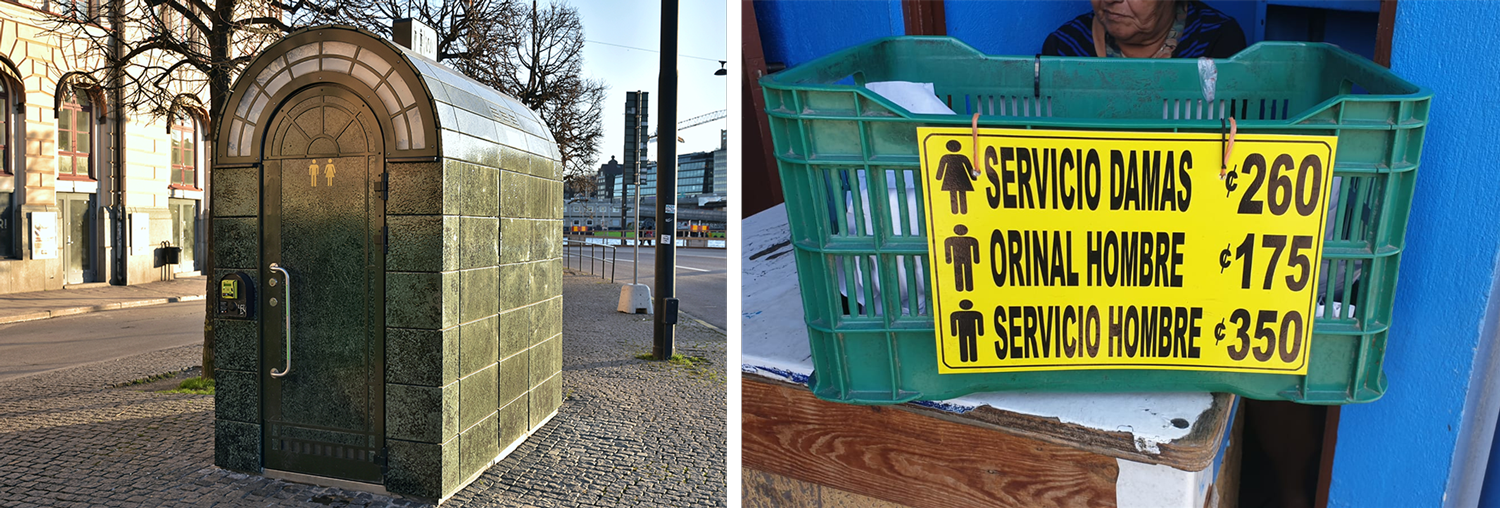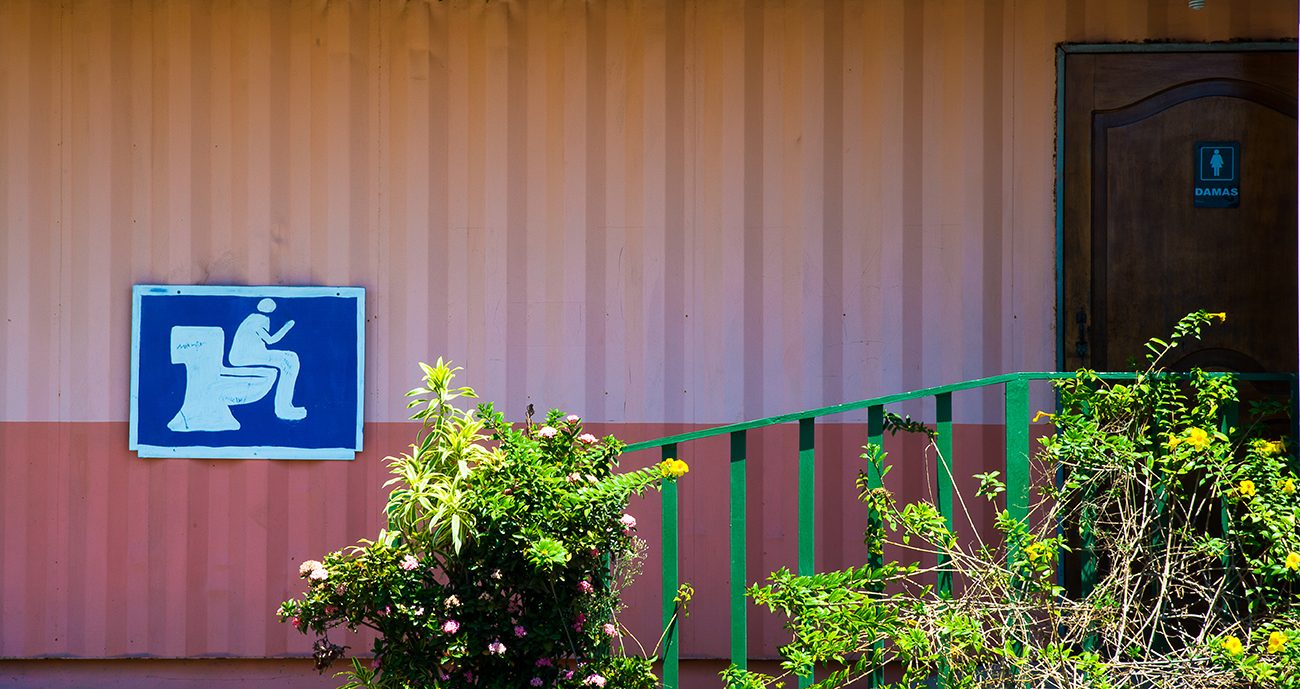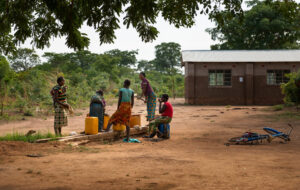Toilets in public places, how long do we have to hold it?
Have you ever visited a city and suddenly had to use a toilet without knowing where to go? Do you remember enjoying a sunny afternoon in that wonderful park and having to leave early because there were no toilets near by? Or that time when you went into a café, asking for the cheapest drink just so you could use the washroom?
Every one of us has at some point needed a toilet in a public place. We just rarely stop to think about them, only when we can’t find them.
Think now about homeless people, workers who spend most of their day on the streets such as waste pickers’ collectives, people with urinary incontinence such as pregnant women or elderly people. Think of people with Chrons disease or chronic diarrhoea, people who menstruate… Those people rely even more on facilities open to the public to access basic sanitation. In many cities where water services do not reach all households, toilets in public places can be the only point of access to water, sanitation and hygiene to most vulnerable people.
While there is consensus that sanitation is a human right, its implementation by States and local governments is still subject to interpretation, and even more so beyond the household, such as public areas.
Democratizing access beyond urban planning
The incorporation of toilets in public spaces is increasingly becoming part of the urban projects of our cities. Architects and decision-makers understand that a sustainable, green, friendly and healthy city is one that provides safe and clean facilities to all citizens’ needs. An example of this is the “transparent toilets” project in Tokyo (Japan). Through innovative designs, the japanese city is turning toilets in various parks from dark and opaque spaces into a tourist attraction.
However, the example of Tokyo is far from being the norm. The UN Rapporteur on the Human Right to Water and Sanitation has raised the issue of sanitation in other spheres of life outside of the household, in order to clarify requirements and provide for sanitation facilities in public places.
Even so, toilets in public places can be very different in order to respond to the needs of different groups. Toilets that may be acceptable for a young adult man may not be acceptable for an older woman. A tourist in a hurry may be willing to pay for a one-time use, while a recycler may not be willing to spend money every day to fulfull basic needs. A person with reduced mobility would have much more difficulty accessing a toilet if it is not physically adapted.
For all these people, toilets in public spaces are much more than a question of urban planning, they are a question of health, hygiene and dignity. They are a matter of human rights and need to be addressed as such. Sanitation services must not only provide to the vast majority, but serve every individual and their different needs.
A human rights approach to sanitation
Since 2018, at the Stockholm International Water Institute, in collaboration with the Inter-American Development Bank, have been studying access to toilets in public spaces from a human rights perspective. We have reviewed service provision in different cities, including San Jose in Costa Rica and Barranquilla in Colombia, in regards to the normative criteria of the rights approach. Our study shed light on the following challenges:
1. Availability
In most cases, there is an even number of toilets for men and toilets for women, not counting the urinals. For physiological reasons, women take longer to urinate than men. This usually results in longer waiting time to access women’s toilets. Therefore, the number of toilet stalls for women should be increased, following a recommended ratio is 2:1 (women:men).

2. Accessibility
Most countries have regulations regarding the design of accessible toilets. However, there is almost no control to verify that the toilets classified as “accessible” comply with the regulations. This results in people with special needs not being able to access those facilities which is a great discrimination.
3. Affordability
The tariff is not always the same for everyone. In some cities, urinals mostly used by men are free and openly accessible, but toilet stalls used mostly by women and people with reduced mobility are chargeable. In other cases, there can be different fees for women and men or if you need to urinate or defecate. All these criteria represent major discriminations. An interesting initiative that is often neglected by cities is the existence of solidarity payment mechanisms: users can pay extra in advance to cover for someone else who would not be able to afford the fee.

4. Quality and safety
There are large differences between cities. In the case of Latin America, the infrastructure is often of low quality, with no continuous water or hygiene products, often dirty and not well maintained. This contributes to a vicious circle in which, the lack of cleanliness, prevents people from using the toilets in public places; as they are hardly used, municipalities do not invest in them; as there is no investment, the quality deteriorates. The lack of maintenance can also lead to making the space less safe so even less used by the population.
5. Acceptability
One of the big issues in terms of acceptability, privacy and dignity is the existence of unisex toilets, accessible to all regardless of gender. At a cultural level, many people express being against unisex toilets, for safety or privacy issues. Older women especially say that they do not feel comfortable sharing toilets with men. However, for the LGBTQI+ community, unisex toilets could indeed provide a safer space for trans and non-binary people, not forcing them to chose a toilet on the basis of sex. To solve this dilemma, many cities have opted to convert accessible toilets into unisex toilets, thus offering three options for users: keeping non-accessible toilets divided by women/ men, while offering a unisex toilet for those who need it.
A future with clean and accessible toilets for all
In the coming years we will deepen our work with the cities of San José and Barranquilla to improve toilet access in public spaces. We are mapping more than 200 facilities in each city to understand the main challenges and find solutions. In collaboration with local governments, public health authorities, service providers, regulators, and different user groups, we are designing measures to create cities with more sustainable, healthier, fairer and more inclusive sanitation services. In short, better cities for all, where we no longer have to hold it.
Sanitation in public spaces
This project studies different cities in Latin America to promote a more inclusive, affordable, safe, and accessible provision of toilets in public spaces.
Learn more about this project









